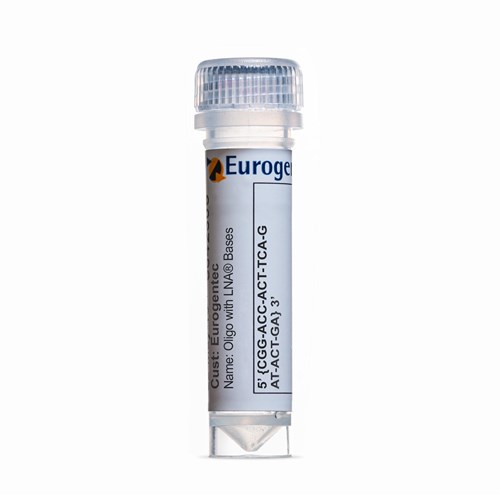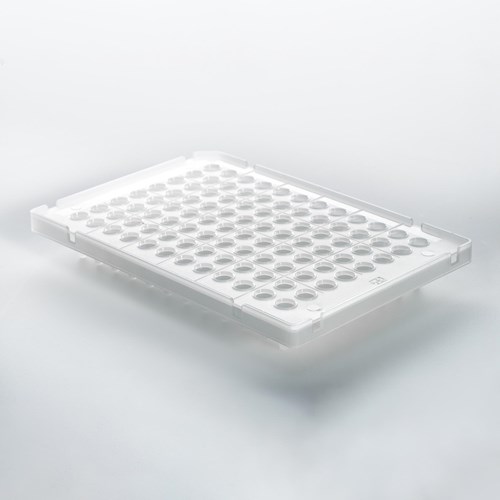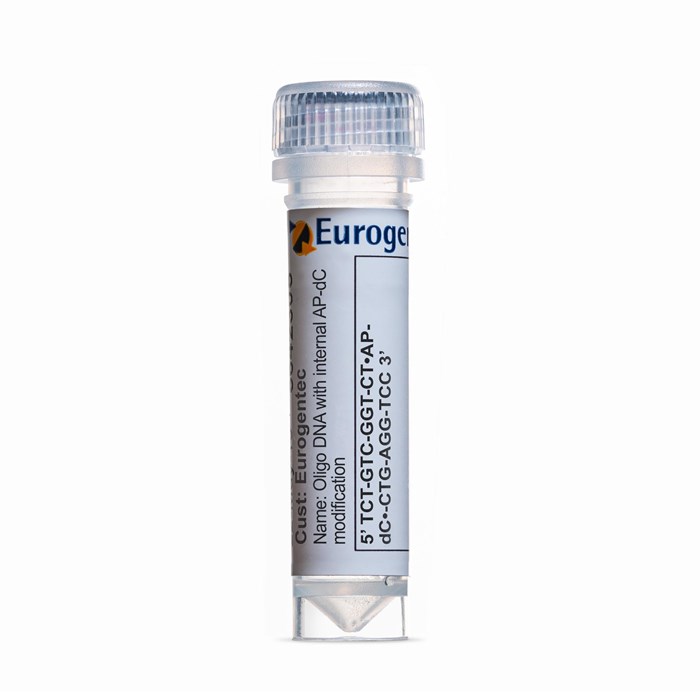AP-dC - 1 modification
- Cat.Number : MD-NB190-IN004
- Manufacturer Ref. :
-
Availability :
In production
AP-dC is a tricyclic Aminoethyl-Phenoxazine 2’-deoxyCytidine analog. As so, AP-dC is a cytosine analog capable of clamp-like binding to guanine (also known as G-clamp).
The heterocyclic phenoxazine structure provides a stable basis for the protonated Amine of an aminoethyl chain to interact with the O6 position of a complementary dG molecule. As a consequence the AP-dC stabilizes a duplex due to its ability to interact with both the Watson-Crick and Hoogsteen faces of the target G.
In practice, G-clamp has a dramatic effect on duplex stabilization. A single G-clamp incorporation in a poly-pyrimidine decamer results in a 18 °C enhancement of the melting temperature of the duplex relative to a control containing 5-Me-dC at the same point. In addition G-clamp dC also increases mismatch discrimination. The specific interaction between G-clamp and the guanine residue is unaffected by the nature of the duplex. The melting temperature of a B-form DNA-DNA duplex containing G-clamp was enhanced to about the same extent as an A-form DNA-RNA hybrid. Finally it has been shown that AP-dC bases are able to increase hybridization efficiency in an additive manner over more than one addition of AP-dC.
The AP-dC modification is a highly potent, mismatch-sensitive cytosine analog that will find applications in elucidating gene function, in validating gene targets, and in developing more potent antisense oligonucleotides. Furthermore, a single incorporation of AP-dC at the 3’ terminus was shown to protect phosphodiester oligonucleotides from 3’-exonuclease digestion. Most interesting is the use of AP-dC for the development of short oligonucleotides for use in highly specific single nucleotide polymorphism (SNP) and other In vitro diagnostic assays.
Specifications
| Modification | |
| Modification Position |
|
|---|---|
| Storage & stability | |
| Resuspension condition |
|
| Storage Conditions |
|
| Activity | |
| Usage |
|
| Codes | |
| Code Nacres |
|
You may also be interested in the following product(s)


